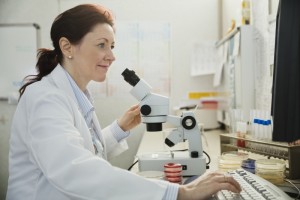It is estimated that every tenth Danish patient suffers from an infection while being hospitalized and more than 3,000 patients die every year because of infections. However, so far, the actual number of infections has not been known, and therefore it has been difficult to find out where actions should be taken
Together with SAS Institute, Lillebælt Hospital in Denmark has developed a new monitoring system that shows hospital-acquired infections and enable the hospital to quantify how many patients catch an infection while being hospitalized. Professor at Lillebælt Hospital, Jens Kjølseth Møller, is the mastermind behind the new system for monitoring of infections that SAS Institute has made possible by using text analysis. Jens Kjølseth Møller expects the system to reduce infections in hospital by a third and thereby increase patient safety.
The system reflects Danish pioneer work that connects many years of clinical experience with modern technology. Breakthrough, says hospital CEO.
"Nobody can be satisfied that patients hospitalized at Danish hospitals are running the risk of getting a further disease. Therefore, working with patient safety is a key focus area for Lillebælt hospital. Now we have a tool that can read infections at patient level. This means that we can now enable our clinical managers to monitor our efforts and do more of the things that work. This is a new era in efforts to reduce hospital infections," says hospital CEO at Lillebælt Hospital.
The first complete monitoring system for infections
Professor Jens Kjølseth Møller has previously developed a system that could make an overview of the number of infections by using the hospital's own files and databases. However, it was not possible to obtain a complete overview of the number of infections. The monitoring system could not detect the registered infections that doctors and nurses reported in medical records.
Therefore, Lillebælt Hospital chose to co-operate with SAS Institute because of their text analysis technology. The technology sets up rules and clinical terms that may present so-called 'triggers' relating to identification of an infection.
"We now know the number of infections during a given period in a given department. We went from fiddling with several figures to now in cooperation with SAS Institute to provide a management tool for doctors and head of departments. We provide SAS Institute with raw data, which then presents the information in a way that clinicians are used to retrieve other management information on," says Jens Kjølseth Møller.
Several hospitals request monitoring of infections
In 2014, for the first time, the department managers at Lillebælt Hospital could draw reports of all infections. The solution allows hospital and department managers to monitor the development of hospital-acquired infections with reports of overview and development over time from hospital level down to department and ward level.
"The information we have on patients today is the information that will help to avoid infections among patients tomorrow. Many of the things we already knew will be confirmed. But we will also be working more actively with what we call intervention, where we try to change procedures to see if we can do it better than we already do," says Jens Kjølseth Møller.
The professor is not only at a premium at Lillebælt Hospital, but is now being approached by everybody. In particular, the United States and our neighboring countries are interested in the new monitoring system. Here the question is about how the system can be customized to countries that do not have social security numbers or IDs like the Danish personal identification numbers.

1 Comment
Many thanks for writing this great article